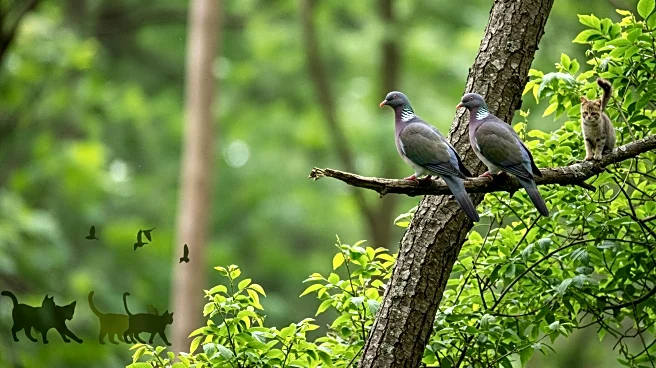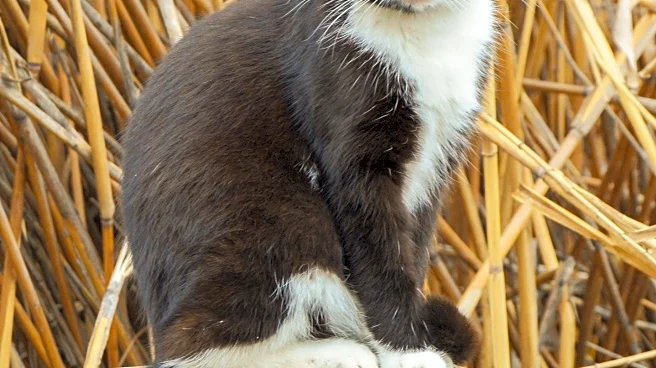What's Happening?
Conservationists in Japan have successfully removed 131 feral cats from the Ogasawara Islands, leading to a significant recovery of the critically endangered red-headed wood pigeon population. The pigeons, which had dwindled to fewer than 80 individuals in the early 2000s, have rebounded remarkably within three years following the removal of the cats. Researchers from Kyoto University have been studying this rapid recovery, which defies typical genetic challenges faced by small populations. The study, published in Communications Biology, highlights the pigeon's resilience and genetic adaptability, which have allowed it to overcome the threat of extinction.
Why It's Important?
The recovery of the red-headed wood pigeon is significant as it challenges the conventional understanding of genetic resilience in small populations. Typically, such populations suffer from inbreeding and harmful genetic mutations, making recovery difficult. However, the pigeon's ability to rebound quickly suggests a unique genetic resilience, potentially offering insights into conservation strategies for other endangered species. This development underscores the importance of targeted conservation efforts and the potential for genetic purging to aid in the recovery of species facing similar threats.
What's Next?
While the red-headed wood pigeon has shown remarkable recovery, its population remains below historic levels, posing a risk of reduced genetic diversity. Conservationists aim to restore the population to its former numbers to ensure long-term survival and adaptability to environmental changes. Continued monitoring and conservation efforts are necessary to maintain the pigeon's recovery and prevent future declines.
Beyond the Headlines
The study of the red-headed wood pigeon offers broader implications for conservation biology, particularly in understanding how isolated populations can adapt genetically over time. This case may influence future conservation strategies, emphasizing the role of genetic resilience and purging in species recovery. It also highlights the ethical considerations in managing invasive species and their impact on native wildlife.












